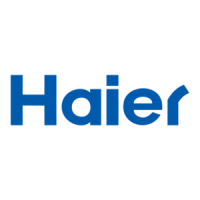How to fix compressor module hardware over current in Haier MRV 5-RC AD162MJERA?
- RRichard CherrySep 12, 2025
If the compressor module in your Haier Heat Pump experiences a hardware over current issue, the solution is to have it rectified on site by after-sales personnel.

